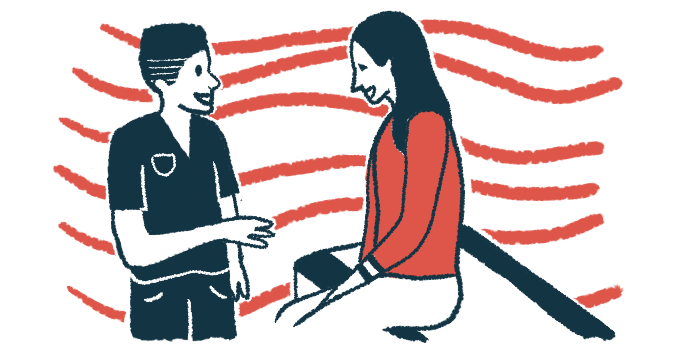Erythropoietin effective for anemia in CAD patients: Study in Italy
Treatment safely increases hemoglobin levels, reducing need for transfusions

Treatment with erythropoietin (EPO), a hormone that stimulates red blood cell production, safely increases hemoglobin levels in adults with cold agglutinin disease (CAD) and other autoimmune hemolytic anemias (AIHAs), according to a single-center study in Italy.
Data show the treatment was effective in patients with abnormally low levels of immature red blood cells.
The study, “Recombinant erythropoietin in autoimmune hemolytic anemia with inadequate bone marrow response: a prospective analysis,” was published in the journal Blood Advances.
AIHAs are a rare group of disorders characterized by immune-mediated destruction of red blood cells. CAD is a subtype of AIHA in which cells are destroyed at low temperatures. AIHA can also occur under warm conditions (wAIHA) or be a mixed or atypical subtype.
Autoimmune hemolytic anemias reduce hemoglobin levels, causing anemia
AIHAs also reduce the levels of hemoglobin, the protein in red blood cells that transports oxygen throughout the body, causing anemia. In response, the kidneys secrete the EPO hormone to stimulate the production of new red blood cells in the bone marrow to restore oxygen transport.
Such rapid blood cell production, as seen in AIHAs, leads to an elevated number of immature red blood cells called reticulocytes in the bloodstream.
Still, about one-third of AIHA patients have a poor bone marrow response that is marked by abnormally low reticulocyte levels, which gives rise to more severe anemia and the need for blood transfusions.
A recent multicenter study showed that, in AIHA patients with low levels of reticulocytes, hemoglobin can be boosted with lab-made, or recombinant EPO (rEPO). Such rEPO treatment has been used in North America as a CAD-supportive therapy but is less common in Europe.
In this study, researchers in Italy set out to confirm the safety and efficacy of rEPO treatment in 47 AIHA patients, ages 19-94, with anemia and inadequate levels of reticulocytes. More than half of the 25 men and 22 women were older than 60, with 19 (40%) diagnosed with CAD; 22 (47%) with wAIHA; and six (13%) with a mixed or atypical form.
“The relatively high prevalence of CAD in the study population (40%) may indicate that inadequate bone marrow response is a prevalent feature in CAD patients,” the researchers noted.
Severe anemia was identified in 27 (57%) AIHA patients, and is defined as hemoglobin levels below 8 grams per deciliter of blood (g/dL). Nearly all patients (91%) had received previous AIHA medications, including steroids, immunosuppressants, and rituximab (sold as Rituxan in the U.S. and MabThera in Europe). One patient underwent the surgical removal of the spleen.
All patients received weekly under-the-skin injections of epoetin alpha, an rEPO formulation sold as Epogen, Procrit, Retacrit, and others, alongside standard therapies given on a clinical basis.
91% of patients experienced partial or complete rEPO response after 1 year
Results showed 55% of patients had partial or complete rEPO response after 15 days, which increased to 74% at three months, 80% at six months, and 91% at one year.
At the same time, hemoglobin levels increased over the same period, from a median increase of 1.4 g/dL at three months to 4.4 g/dL after a year. The need for blood transfusions also decreased, from 9% after 15 days to 0% after one year.
Overall response rates were higher in wAIHA than in CAD patients (73% vs. 26%), as were increases in hemoglobin (11.3 vs. 9.7 g/dL). Lactate dehydrogenase levels, a sign of red blood cell destruction, progressively decreased after 15 days, while those of reticulocytes increased. Relapse was reported in 12 patients (26%).
While seven CAD patients received four weekly doses of rituximab during the study, there was no relationship between the use of extra medications and rEPO response. “Responses were observed in CAD patients irrespective of rituximab treatment,” the team noted.
The median duration of treatment was four months, with ranges from one week to four years. After one year, 35 (74%) patients stopped rEPO mainly due to sustained responses (64%) but also non-responses (4%), adverse events (1%), and two deaths (4%) in elderly AIHA patients.
5 adverse events reported in study
Five adverse events were reported, including two wAIHA patients with blood clots, one patient with acute kidney failure, and two infections, one in a CAD patient and the other in a wAIHA patient.
The researchers then compared these findings to those from 43 AIHA patients with similar clinical features who did not receive rEPO treatment. All AIHA medications used were similar between rEPO and non-rEPO patients.
The partial or complete response rate was significantly higher in those treated with rEPO than non-rEPO-treated patients at 15 days (55% vs. 32%). Consistently, hemoglobin levels were significantly higher in rEPO-treated patients after 15 days (9.4 vs. 8.6 g/dL) and one year (12.2 vs. 11.2g/dL). In addition, fewer transfusions were needed with rEPO treatment than without (9% vs. 15%). The frequency of adverse events was similar between the two groups.
This study “supports the use of rEPO on the top of immunosuppressive therapy to obtain an early [red blood cell] response and to reduce transfusion need in AIHA with inadequate bone marrow compensation,” the researchers concluded.








